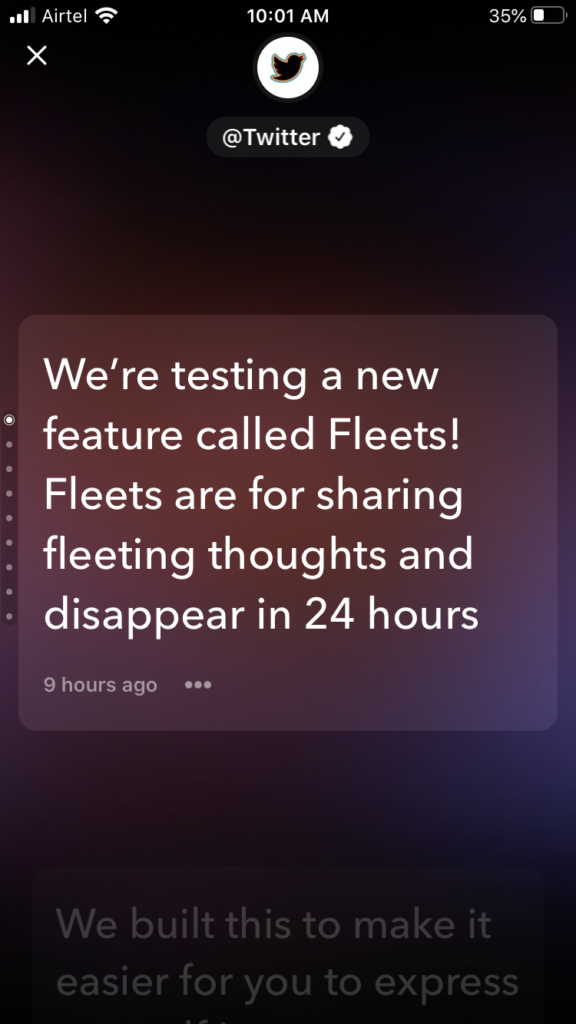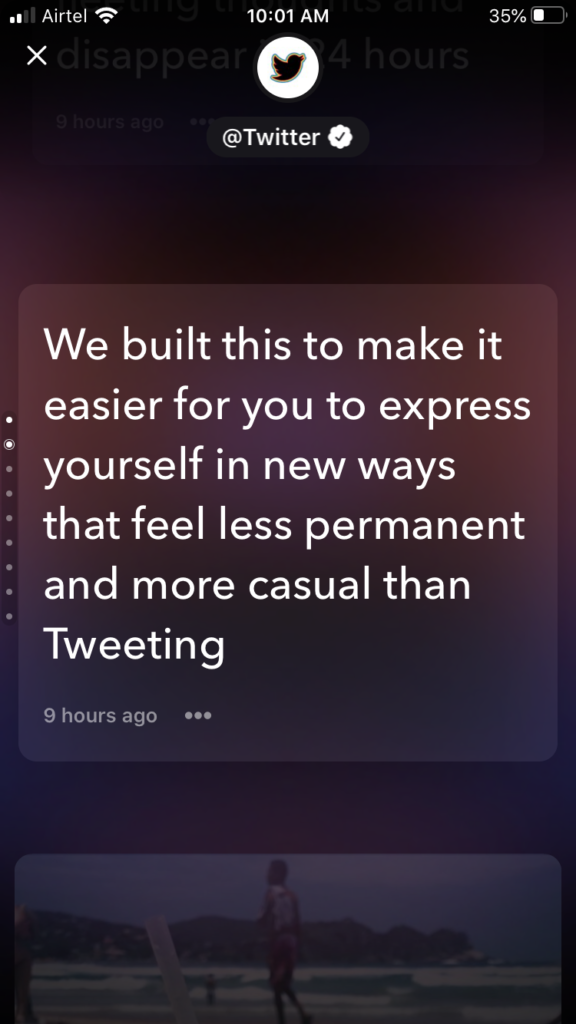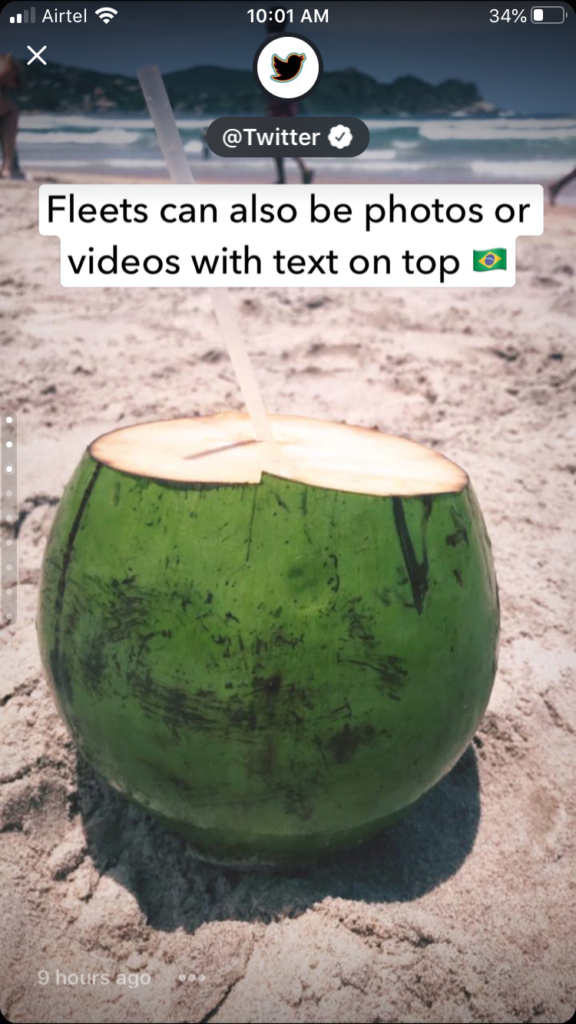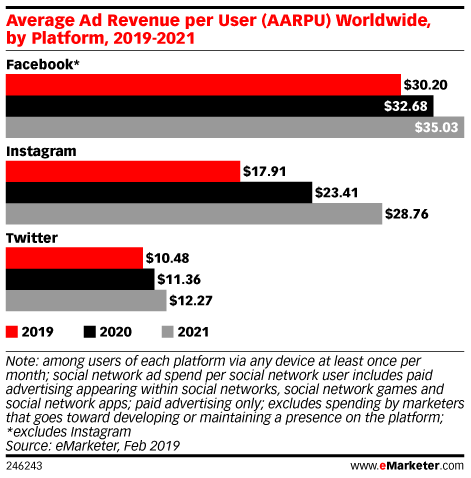Earlier this week, Twitter rolled out their stories feature (called Fleets) in India. While Twitter first rolled out Fleets in Brazil in March-2020, India is the third market (Italy being the second) where the feature is now available.
What are Fleets and how do they work?
- Fleets, as they are called are text/picture/video updates that last for 24 hours.
- Available only on mobile clients for now, they show up rather on top of home feed rater inconspicuously.
- Fleets can be replied by mutual followers (friends as they are called) or if the creator has their Direct Messages open.
- Fleets can‘t be retweeted, won’t show up in search and can’t be embedded on external sites.
Stories are the new Feed
While they might seem like a not so old addition to the world of Social Networks, Stories were first introduced by Snapchat in late 2013.
For Snapchat, stories was a dream feature which was off to terrific start and became their most popular feature eclipsing snaps within 8 months of its launch. In April 2014, 500 million stories were viewed in a day and that number doubled to a billion stories viewed per day by June 2014. Snapchat DAUs grew from less than 40 million in Oct’13 (when stories launched) to 153 million by Oct’16.
Below is a short video by Evan Spiegel explaining Snapchat, it also covers briefly what stories are, ‘They are a collection of snaps from a day, in chronological order, this is different from a feed in most social media networks which are in reverse chronological order’
While Snapchat had a clean runway for almost 3 years with stories, its success caught attention of their biggest competitor Instagram which blatantly (but rightly so) copied and launched stories in Aug 2016.
Instagram Stories became a massive success. Just two months after its launch, it had 100 million daily active users, a number that doubled to 200 million by April 2017 and 250 million by June 2017, figures that dwarfed Snapchat’s 166 million daily active users. — Wired (2018)
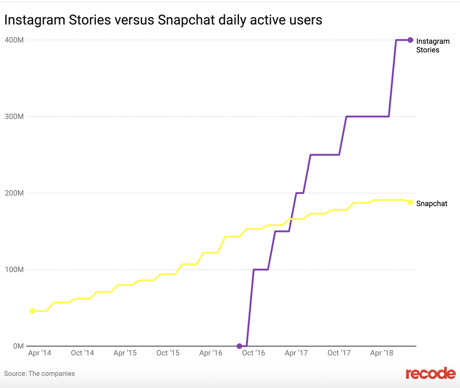
The power and future potential of stories (and desire to stall Snapchat’s growth) was not lost on Zuckerberg, who launched an all out attack against Snap by integrating stories on all their products starting with Instagram (Aug’16), followed by Facebook Messenger (Sep’16), Facebook App (Jan’17) & Whatsapp (Feb’17).
After trying at least half a dozen times to steal Snapchat’s thunder, stories did the trick. By Early 2018, each of facebook’s products had more DAUs than Snapchat
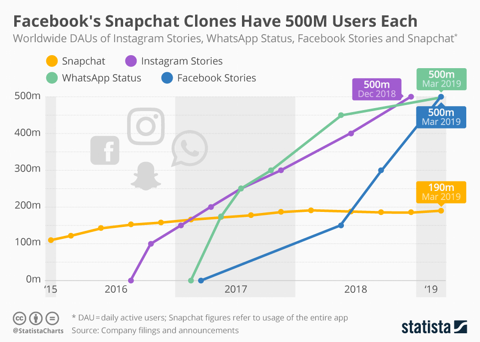
Stories are Eating the World
For the first 2.5 years or so since they first appeared, Stories went largely unnoticed but that changed after Facebook integrated them in their portfolio apps.
- Proliferation of stories across the web: Soon after the success of Snapchat & Facebook, every social media/content/messenger was trying to integrate stories.
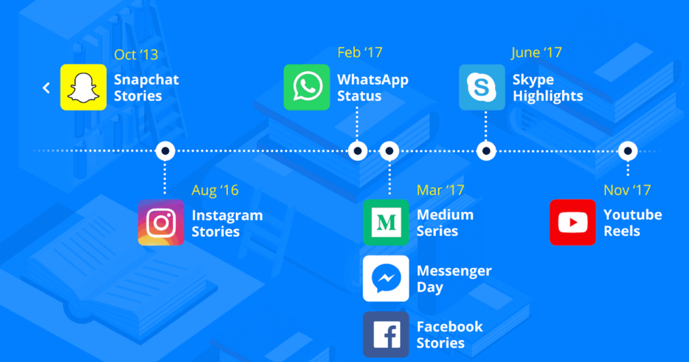
Like most things in life, blindly copying doesn’t always work. Skype rolled back it and Youtube stories never really took off. The reasons for it not working could be vastly different in both these cases
2. Stories Everywhere: While more and and platforms were trying to incorporate stories format for themselves to increase content creation and more user engagement. Snapchat decided in Apr’19 to allow stories to go beyond their walled garden by launching ‘Stories everywhere’. They later enhanced it further by having ‘App Stories’, powered by Snapkit, to be posted to over 3rd party apps such as Hily, Triller & Squad.
Perhaps, this could be a trend which Facebook and others also follow
As of today, Stories are a primary way in which users share, consume and engage with content across different apps. There’d would be around 1.5 billion users around the world that create or engage with stories.
The Beauty of Stories
As of today, Stories are a mainstay in the online ecosystem with varying degrees of success. Let’s take a look at what makes stories tick.
The stripped-down format of Stories offers users the ability to share what’s happening or what they are thinking in the moment in a raw, authentic way . This gives users an opportunity to move away from the need to carefully curate their posts.
- Low Bar — The amount of content a user shares on social networks is primarily dependent on its quality and if they’d want it to be there on their profile/feed permanently. The quality of content determines the engagement (validation) which puts some pressure. By having posts that get deleted in 24 hours and don’t show engagement stats publicly rids the users of any pressure and lowers the bar on what content get shared.
- Shift to Photos & Video — A picture is not only worth a thousand words but also easy to take and consume. With the proliferation of smart phones and mobile internet, more people across demographies got access to internet. Also, the preferred type of content for consumption moved away from Text to Photos & Videos. Apparently, videos consumption is nearing 45% of overall consumption. Stories are a great way to build upon and leverage this trend.
- Ease of Creation & Added Effects — Whether it’s Instagram or Whatsapp, creating stories is really easy and most apps support additional features such as filters, gifs & polls to enhance the appeal of stories by making them look fresh and interactive.
- Access: In most apps, stories appear on top of users feed making it easy to access without compromising their feed. While by design feed users would be lower than app users, this pull based approach ensures higher engagement among stories users as they more motivated. This also ensures, that users don’t have to worry about spamming their friends feed by posting 7 updates in 30 minutes.
- User Experience: The experience of scrolling through multiple user stories is extremely neat. You can skim through the stories in a go, skip some, resume them later and engage with them. The fact, that the responses to users inbox ensures privacy that further removes friction. With stories (unlike post on feed), no one knows who is responding to whom. Given the lightweight and low bar on creation, stories ensures the variability in rewards (what would come next?) which leads to habit creation.

Twitter & Fleets:

But, this seems to be changing now. During Q1’20, Twitter registered highest increase in their DAUs in the last 5 years.
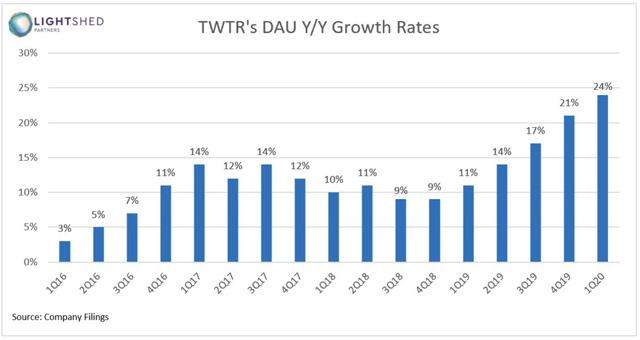
While user growth is great, a core problem for Twitter is monetizing its users. During Q4’20, their revenue growth was only 11% against user growth of 21%. While Twitter has been actively trying to fix this, with the release of Fleets there’s a good chance of this happening.
Better Ad Monetization via Fleets
For all the (small but) premium audience Twitter attracts, it’s ability to monetize them isn’t even half as good as Facebook.
I spend 5X the time on Twitter as compared to all other social media sites combined but I can hardly remember being targeted by a relevant ad. It’s that scarce. Similarly, when it comes to running campaigns, Twitter never got to the consideration set in most app install I’ve done, seen/heard about.
(Big Audience -> Data Collection -> User Profiling -> Ad Targeting -> UX to drive installs/transactions) * Repeat
All of this has been a challenge but Fleets could just be light at the end of this tough path to better monetization.
The Opportunity:
- Increased Surface Area — By having updates that get deleted in 24 hours and don’t appear by default in your followers timeline, Fleets increase the surface are of their users social media postings. While earlier, If I had to post picture of my meal or new purchase I had no option but to go to Instagram, Snapchat etc to post as I felt that pic didn’t belong to Twitter. But with Fleets, that changes. Like my, for many users their share of social media time is likely to tilt towards Twitter.
- Higher Engagement — Over time once it picks, users should post same or more fleets than tweets which implies more time spent, data collected & engagement among other users.
- Shift to Videos & Images — This is really interesting, away from the land of majority text updates in a feed, stories offer a more visual and focused experience, which is better suited and contextual for advertising (esp. App Installs or even commerce)
While I’m quite bullish of Fleets being a great addition to Twitter and wait to see how things unfold, I’d love to know what do you think.
